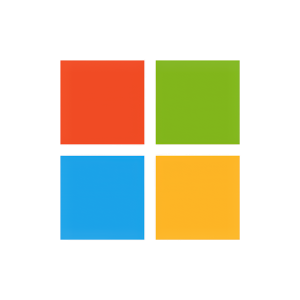Microsoft releases findings and considerations from one year of remote work in Work Trend Index
Microsoft Corp. released its first-annual Work Trend Index, highlighting key hybrid work trends affecting organizations. The report, based on insights from over 31,000 respondents and extensive data analysis, emphasizes the importance of adapting to flexible work models. Key findings include a demand for continued remote options (73%), an increase in remote job postings, and a potential employee turnover risk as 40% of the global workforce considers leaving their jobs. The report also outlines strategies for leaders to foster collaboration and innovation in this new work era.
- 73% of workers want flexible remote work options to continue.
- Remote job postings on LinkedIn increased more than five times during the pandemic.
- The report offers actionable strategies for business leaders to adapt.
- Over 40% of the global workforce is considering leaving their employer this year.
- High productivity levels may mask an exhausted workforce.
REDMOND, Wash., March 22, 2021 /PRNewswire/ -- Microsoft Corp. on Monday announced findings from its first-annual Work Trend Index. Titled "The Next Great Disruption Is Hybrid Work — Are We Ready?" the report uncovers seven hybrid work trends every business leader must know as we enter a new era of work.
The report indicates that business leaders should resist the urge to see hybrid work as business as usual. It will require the rethinking of long-held assumptions.
"The choices you make today will impact your organization for years to come. It's a moment that requires clear vision and a growth mindset," said Jared Spataro, corporate vice president for Microsoft 365. "These decisions will impact everything from how you shape culture, to how you attract and retain talent, to how you can better foster collaboration and innovation."
The findings suggest that this past year has fundamentally changed the nature of work:
- Collaboration trends in Microsoft Teams and Outlook suggest our networks have contracted, but hybrid work will revive them.
- Time spent in meetings has more than doubled globally, and over 40 billion more emails were delivered in February of this year compared with last.
- Work has become more human. Nearly
40% say they feel more comfortable bringing their full selves to work than before the pandemic, and one in six have cried with a colleague this past year.
They also show that we are on the cusp of a workplace disruption:
73% of workers surveyed want flexible remote work options to continue.- Remote job postings on LinkedIn increased more than five times during the pandemic.
- Over
40% of the global workforce is considering leaving their employer this year and46% are planning to move now that they can work remotely.
In short, addressing flexible work will impact who stays, who goes and who joins a company.
To help organizations through the transition, the 2021 Work Trend Index outlines findings from a study of more than 31,000 people in 31 countries and analyzes trillions of aggregate productivity and labor signals across Microsoft 365 and LinkedIn. It also includes perspectives from experts who have studied collaboration, social capital and workspace design at work for decades.
The report uncovers seven hybrid work trends every business leader needs to know as we enter this new era of work:
- Flexible work is here to stay.
- Leaders are out of touch with employees and need a wake-up call.
- High productivity is masking an exhausted workforce.
- Gen Z is at risk and will need to be re-energized.
- Shrinking networks are endangering innovation.
- Authenticity will spur productivity and well-being.
- Talent is everywhere in a hybrid work world.
In addition to uncovering what's at stake with the future of work, the Work Trend Index identifies five strategies for business leaders as they begin to make the necessary shift:
- Create a plan to empower people for extreme flexibility.
- Invest in space and technology to bridge the physical and digital worlds.
- Combat digital exhaustion from the top.
- Prioritize rebuilding social capital and culture.
- Rethink the employee experience to compete for the best and most diverse talent
"During this pandemic we've observed a swift acceleration of certain pre-COVID trends. But perhaps one of the most exciting trends is this rise in remote work," said Karin Kimbrough, chief economist, LinkedIn. "As opportunity is democratized with remote work and talent movement, we'll see a spread of skills across the country, and this is the time for business leaders to take the opportunity to access different skills and talent not previously available to them."
The full findings can be viewed at Microsoft's Worklab, a digital publication about the future of work.
About WorkLab
WorkLab is a Microsoft digital publication devoted to illuminating the future of work, grounded in research and the lessons of the COVID-19 pandemic. By bringing together science-based insight and thoughtful, compelling stories on how work is changing, WorkLab's mission is to start larger conversations about the future of work and help customers in the process.
About Microsoft
Microsoft (Nasdaq "MSFT" @microsoft) enables digital transformation for the era of an intelligent cloud and an intelligent edge. Its mission is to empower every person and every organization on the planet to achieve more.
![]() View original content to download multimedia:http://www.prnewswire.com/news-releases/microsoft-releases-findings-and-considerations-from-one-year-of-remote-work-in-work-trend-index-301252478.html
View original content to download multimedia:http://www.prnewswire.com/news-releases/microsoft-releases-findings-and-considerations-from-one-year-of-remote-work-in-work-trend-index-301252478.html
SOURCE Microsoft Corporation
FAQ
What are the key findings in Microsoft's Work Trend Index report related to hybrid work?
How many people participated in the Microsoft Work Trend Index study?
What does Microsoft suggest for leaders in their Work Trend Index?
When was the Work Trend Index released by Microsoft?








